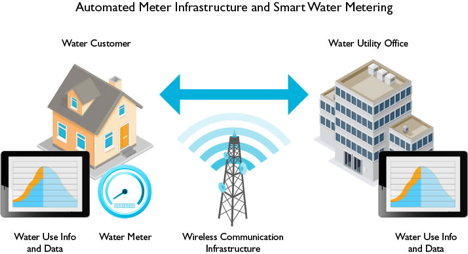Provide tips, incentives, and resources for improving energy efficiency in buildings.
People are demanding more energy efficient homes and buildings.[i] However, improving energy efficiency can be a daunting task. Assisting Provo’s residents and businesses in meeting their energy goals will help clean our air.
Tool: Use energy bills as a way to distribute information about household emissions that contribute to poor air quality.
Providing consistent reminders about the benefits of updating appliances and reducing emissions plays an important role in educating the public on how they can help improve air quality in our city.
Tool: Encourage installation of the best available technologies to attain the highest efficiency standards on new homes/buildings and remodels with incentives.
While many households and businesses are interested in reducing energy use and saving money, they lack the resources to do so.
Resources
Case Studies
- Green Building Incentives, Charlottesville, Virginia. The city of Charlottesville has adopted financial incentive programs to encourage energy efficient buildings. http://www.charlottesville.org/departments-and-services/departments-h-z/public-works/environmental-sustainability/green-building-incentives
- Lighting and HVAC upgrades result in $7,000 savings, Melbourne, Australia. The Ross House building, which houses mostly nonprofits, undertook a lighting upgrade and replaced its heating and cooling system, cutting its energy use by 37 percent. “That sliced $7,000 off the building’s energy bills each year, and helped the building achieve a respectable four out of six stars in Australia’s NABERS system for measuring the environmental performance of buildings.”
http://www.citylab.com/design/2015/10/what-melbourne-learned-cutting-emissions-from-1200-buildings/410293/?utm_source=SFFB
Tool: Encourage the highest payoff energy efficiency technologies.
Ground source heat pumps, high performance insulation systems and air sealing systems can be relatively inexpensive and result in reduced energy consumption.
Resource
- Guide to Federal Tax Incentives for Residential Geothermal Heat Pumps - “In October 2008, geothermal heat pumps were added to section 25D of the Internal Revenue Code, which provides a 30% tax credit for spending on qualified property placed in service through the end of 2016.” Tax credit can be combined with solar and wind tax credits and energy efficiency upgrade credits. http://www.climatemaster.com/downloads/RP215.pdf
Tool: Encourage homeowners to calculate the energy efficiency of their homes.
Understanding energy problems in a building is the first step to improving energy efficiency.
Resource
- o The Home Energy Rating System (HERS) index is the nationally recognized scoring system for measuring a home’s energy performance. The HERS Index Score can be described as a sort of miles-per-gallon (MPG) sticker for houses, giving prospective buyers and homeowners an insight as to how the home ranks in terms of energy efficiency. In addition to a HERS Index Score, a home energy rating also provides the homeowner with a detailed report regarding energy problems in the house.
https://www.resnet.us/hers-index
Tool: Implement smart meters.
A smart meter is an electronic device that records electric energy consumption in intervals of an hour or less and communicates that information back to the utility company daily for monitoring and billing. By helping households realize exactly how much energy they are consuming and how much it is costing them, many may realize that they can cut back on certain energy uses to save money and reduce unnecessary consumption.

[iii]
This is a diagram of a water smart meter, though smart meters now exist for all different utilities.
Case Study
- National Rollout of smart meters, United Kingdom. “By the end of 2020, around 50 million smart meters will be fitted in over 26 million households across Wales, Scotland and England.” http://www.smartenergygb.org/national-rollout




